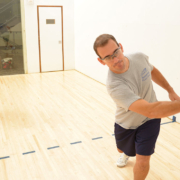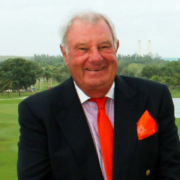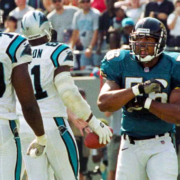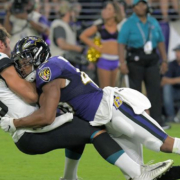What Happened to Racquetball
It was my second trip to Jacksonville, and my first in a non-work capacity. I had been here for the 1978 Clemson/Ohio State Gator Bowl game, famous for Woody Hayes punching Charlie Bauman after an interception that led to the Tigers’ 17-15 victory. But save for the ‘drive-thru’ during my high school senior trip on our way to Daytona, I didn’t know much about the ‘Bold New City of the South.’
Living in Charleston, my doubles partner, Kenny Rhea and I, had won a small state racquetball doubles championship in South Carolina in 1979 and headed to Jacksonville to play in the regionals.
I had played racquetball for a while, usually the outdoor, single-wall variety as a bartender in Washington D.C., but I was introduced to the indoor. four-wall (five if you count the ceiling) when I worked in Charleston.
“We’re in trouble,” I said to Kenny as we walked into RacquetPower in Mandarin. The first thing we saw was two guys playing an exhibition on the glass enclosed show court in the middle of the club.
Watching the two players go at it in front of more than a hundred fans, they were hitting shots we only dreamed about. Both of us knew we had stepped into a whole different world. Little did we know that the two players, Mitt Layton and Curtis Winter, were world class, national championship caliber players.
“We had a lot of good players in town,” Susan Pfahler, a thirty-time national champion and a member of the Racquetball Hall of Fame told me this week. It was a bit of an understatement. Susan was one of the top players in the country during racquetball’s heyday and only retired from the game about four years ago.
“My body couldn’t handle it any longer. All those years of pounding and hitting the floor,” she said.
“It breaks my heart that I can’t teach my grandchildren the game I love,” Susan’s doubles partner, Mary Lyons, also a Hall of Fame member told me this week.
Jacksonville was a hot bed for racquetball in the ‘70’s, ‘80s’ and into the ‘90’s. There were more than forty courts from the Beaches to Orange Park. Leagues, tournaments and recreational play were all part of the sports fabric of North Florida.
“We had courts at the Beaches, in Orange Park, in Arlington at the Jacksonville Athletic Club and in Mandarin at RacquetPower,” Mary recalled. “We had lots of tournaments, great players. I was the state president and we had thousands of people playing tournaments. But now it’s going the way of handball.”
How can a sport so prevalent and prominent fall from grace so quickly?
“A lot of clubs closed down,” nineteen-time national champion and North Florida resident Mitt Layton explained. “There were a lot of clubs, but they kept closing. It got to the point in the late 90’s that we’d have to go to apartment complexes to play. We’d have to have keys to get in and I don’t know that the apartment complexes knew we were playing there.”
Layton, also a member of the Racquetball Hall of Fame, last won a national championship in 2005. But he knows what happened to the sport on the recreational and local level.
“You have to get kids back interested again” he said. “I was a coach for the US Junior Olympic team for two years. The junior team had won the world championships a couple of years in a row, but Mexico started to beat us because they developed their kids. They’d do their homework and then they’d go drill at the courts. They worked at it; they were hungry. They didn’t have a lot of other interests. They lived it, they boomed. That’s why they’re still the best.”
As of now, racquetball in the US has no developmental structure, no junior leagues, no way for young people to get involved in the game.
“The game is dying, I only play occasionally,” Lyons, a winner of more than twenty national titles added. ”LA Fitness is our only choice for courts, but they don’t allow children. So, we can’t grow the game. That’s what the game needs.”
A long-time mixed doubles partner for Lyons, Curtis Winter agrees.
“The governing bodies were so interested in getting into the Olympics that they forgot to grow the sport,” Winter, a multiple state champion and national contender explained.
“I used to go hit balls on the court when my dad was playing at the Downtown Y as a kid,” he continued. “But they won’t allow young kids on the court so the kids can’t learn the game. That’s how I learned.”
Winter and Layton still play occasionally as does Lyons. She and Curtis teamed up for the US Open Doubles competition in 2019. But Winter has shifted his focus to the outdoor, three-wall game.
“There are very few new people in the indoor game,” he explained. “We play outdoor, and we get eight or twelve players, and we watch and comment on how the game is being played. That’s what it’s about, being involved with the people in the game. That’s why I’ve also started playing pickleball. Because there’s people there!”
“It’s like a reunion every time I go to play,” Layton explained. “I might play once a week, and it’s the same guys I used to play with. I don’t recognize a lot of the guys because they’re looks have changed. I remember at RacquetPower I’d take some young players under my wing and just play with them. That’s what made the game better.”
Layton said bringing other player along and making them better was an important part of the game.
“I remember talking with my doctor, Jim Baldock at an appointment in his office and we started talking about his game,” Layton recalled. “Here we were, in a clinical setting and I was talking about his backhand. I helped him with that, and he won the club championship.” (I asked Jim, a friend of mine, about that, who confirmed Layton tutored him along but said, “I’m sure I only won my division.”)
Nonetheless, it was the comraderie that kept the sport alive. Traveling and playing in tournaments, seeing the same competitors several times a year, that’s the fun part of the sport everybody remembers.
“I enjoyed doubles best, the camaraderie,” said Lyons, the Florida State Racquetball Association President for eight years in the ‘80’s. “The game is the game, but the people are the most important part. It’s the experience. The experience isn’t there anymore. I teach some of my friends and I’d do more of that. But we need an encouraging, educational system to develop the game. There’s not junior tournaments, and not any development of the game.”
Looking for an outlet now that her racquetball days are over, Pfahler has turned to Pickleball as many former racquetball players have.
“There’s some strategy like racquetball but nothing like the workout for racquetball,” she explained. There are angles, you can hit it easy or hard or a little bit of finesse, but nothing like the workout you’d get playing racquetball. You’d be drenched after playing and that was the good thing. And it was indoors. We probably saved our skin from the sun. It was in the air conditioning and it was a great workout.”
Recently, Pfahler ran the leagues at the local LA Fitness courts but didn’t see the game growing.
“I think it was hard to make money owning racquetball courts,” she said. “Even in our heyday they were taking courts away for aerobics rooms, more weight rooms.”
“It can be a hard game to play,” she added. “When I ran the leagues, I’d have all kinds of people say to me ‘I used to play racquetball.’ But they’d come out, get sore or get hurt and never come back. The “C” players helped the clubs stay in business but if they got hurt, they stopped coming.”
Lyons saw the demise of the sport coming and shifted her focus to golf. A member of the FSU Golf team in college, Lyons became a LPGA Class A professional in 1998 and currently teaches at Jax Beach Golf Club.
“There’s a lot of similarities to the mental part of both games,” she said. “You’re going to hit bad shots. Hit another shot that gets you back in the game.”
And while she has golf students from five to ninety years old, she doesn’t see racquetball coming back to the limelight.
“It’s a sad thing, it was such a popular game,” she explained. “So many other things came around and were free. Paddleboard, rollerblading, all of that. You had to be a member of a club to play racquetball and a lot of people chose to not spend that money.”
And despite the sport seemingly going the way of handball in the ‘50’s and 60’s, Lyons still loves to play the game.
“There might be three or four facilities that have courts in town” she explained. “I see the same people playing who I’ve seen for 35 years. I love it, the intensity, the adrenaline. It’s a ‘high’ I don’t get from anything else I do.”





